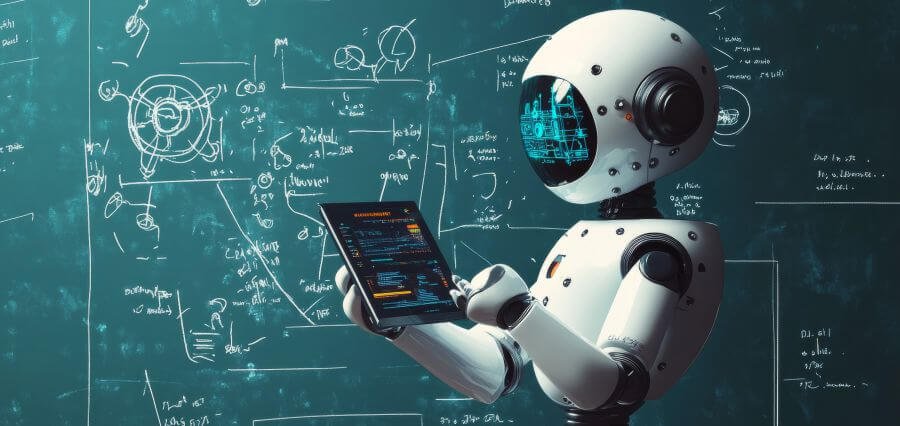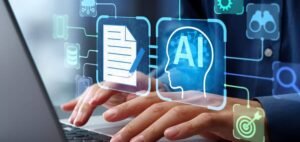A Journey from Static to Dynamic Learning
For decades, classrooms resembled identical twins: rows of desks, the teacher at the front, and chalk as the initial remedy for learning. The instruction pedagogy and learning were formulaic, formalized, and standardized by and large. Although this model worked for generations, it was also restrictive—pre-programmed material, training in the one size, and unhurried feedback loops. Flash forward to the current times, and we are living in an education renaissance, as tedious chalkboards have been taken over by smartboards which provide interactive learning, gateways to the internet, and now AI chatbots that can converse with students in real-time. It is not so much about replacing tools in itself—it is about redefining the nature of learning.
The Rise of AI as a Learning Partner
Chatbots have been one of the most revolutionary educational technologies. These AI systems are no longer information repositories; they can give answers to student queries, give customized explanations, and provide 24/7 assistance. From university help desks to elementary school tutoring, AI friends are filling the gap to support human teachers. A student pinned at midnight working on a mathematics problem can receive instant feedback, and language students can rehearse conversations with robots that never tire or criticize. The instant nature of this response speeds learning and makes it easier across calendars and time zones.
Personalization at Scale
The largest transformation from chalkboards to chatbots is the possibility of delivering truly personalized learning at scale. During the days of the chalkboard, one or two students behind a teacher could be accommodated, but all thirty of a class could not be adjusted for. AI systems’ immediate analysis can identify knowledge gaps and adapt content to meet. If an extra reading is advised for one student or interactive practice for another, learning becomes from the general to the custom.
The Evolving Role of Teachers
The introduction of chatbots does not undermine the role of educators—it evolves it. Instead of mere content delivery, instructors are now guides, facilitators, and mentors who guide students through a huge, dynamically changing digital world. By having some of the boring chores of grading or responding to pliky questions taken out of their hands, teachers can spend more time on critical thinking exercises, collaborative learning projects, and advising. In a way, AI can make education more human by allowing teachers to focus on what they are not able to do—empathy, inspiration, and moral guidance.
Closing Access and Inclusion Gaps
AI chatbots can increase access. For students in remote or underprivileged areas, access to master tutors or master instruction may be limited. Chatbots, accessed through a computer or smartphone, can bridge these gaps by providing quality study content and support to students with internet access. In addition, AI tools can be made flexible to serve different requirements, providing text-to-speech for visually impaired students, real-time translation to non-English-speaking students, and different forms for learning-disabled students.
Real-Time Feedback and Continuous Assessment
Back in the days of chalkboards, students only got feedback on an assignment or exam in days or weeks, with no opportunity to alter course at the moment. Chatbots and AI systems allow instant feedback now, enabling students to learn from errors in the moment. Ongoing assessment software measures progress on a week or month scale, providing teachers with more insight into students’ improvement than the single score. This action supports a broader and more supportive evaluation approach, one that holds improving equal value to achieving. Ethical Considerations in the AI Classroom
With technology playing a increasingly more dominant role in learning, it also introduces an array of ethical issues.
Privacy of information, algorithmic bias, and excessive dependence on machines are all legitimate issues. Institutions will need to facilitate transparency in the means by which AI tools collect and utilize data, retain student data, and train educators to critically evaluate AI-suggested recommendations. Ethical deployment is not a choice—it is what will be forged on as a basis for trust in AI-powered learning. Preparing Students for an AI-Driven World
Using chatbots and AI software in the classroom isn’t necessarily about making learning better right now—it’s also about getting ready for a future where AI will be involved in nearly every field. AI systems need to be understood, their capabilities and limitations grasped, and successfully sharing the space with technology must be realized. The schools willing to jump on board now are actually getting students ready for an advantage in the workplace soon.
The Hybrid Future of Learning
The shift from chalkboards to chatbots is not an era of replacement, but of fusion.
The future will be a hybrid one where human creativity and technological capability go hand in hand. A superb teacher, with smart digital tools at their disposal, can teach more pupils, address more needs, and attain more engagement. Whereas the chalkboard was revolutionary for its simplicity at that time, the AI chatbots are revolutionary because of their ease of use and flexibility—and it will be the meeting of man’s imagination with machine precision that will bring the next revolution in education.




